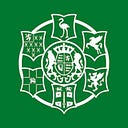(L)ex Libris — the art of the legal bookplate

A bookplate, or printed “ex libris” label, was for a long time the widely recognised way of not only marking the volumes in a library, but also announcing to the world that a book’s owner was a person of some substance — sufficient, at any rate, to own a library.
Their earliest use can be dated back to 15th century Germany, with the dawn of printing providing a mechanism both for the manufacture of books in substantial print runs, and also for the printing of labels to put in them. The practice spread to France and England where it became the custom for aristocrats and the richer merchants to commission designs commensurate with their social standing.
Perhaps not surprisingly, lawyers were among the first to take advantage of this opportunity to reflect their professional and intellectual status. One of the earliest was Nicholas Bacon, an attorney of the Court of Wards, and father of the more famous Francis.

According to English Book-plates, Ancient and Modern, a historical survey published in 1893 by Egerton Castle, the “very handsome device he had engraved on wood for the books presented to his Alma Mater” (ie Cambridge) is hand-coloured; but Bacon is thought to have used a similar design, uncoloured and without the inscription, for his own books. Its style is described by Castle as “Tudoresque”.
John Reilly of the Middle Temple provides a particularly florid example from the 1690s:

The Latin is from the Epigrams of Martial (“All shall exclaim, O book, that you are mine”). In much the same style, though not quite as elaborate, was that of another member of the same Inn, St John Broderick, dating from 1703:

Another from the Temple is that of Edward Abram, which has a more florid look:

John Ord’s, of Lincoln’s Inn, has a more sporting look:

A rather more modern (mid-20th century) example (from Middle Temple) is that of Gilbert Dold, whose name appears in a number of reported cases from the Privy Council in the 1950s:

Two examples of more famous owners include Baron Halsbury, whose bookplate appears at the top of this article, and William Blackstone:

An earlier and more elaborate version of Blackstone’s bookplate, used to mark a book acquired as a student of Pembroke College, Oxford in 1741, has been offered for sale (spoiling the book from which it has been excised, not untypically) for more than two thousand US dollars, at a website called History For Sale.

There is a sad irony in the way that a device used to mark a piece of property and prevent its loss should become even more valuable than the thing it protects, and thereby the cause of its being damaged or discarded. One can’t help wondering what book Blackstone thought worth adding to his library — or indeed what marginal notes and markings up he might have left in it.
Many lawyers’ personal collections, if not preserved or broken up for sale on their death, would have been donated to libraries such as those of the Inns of Court, who themselves also had bookplates for their own collections, such as this old one from Gray’s Inn:

In the case of a rare or valuable book, the bookplate can also serve as a sign or even guarantee of provenance; sale catalogues often include them in the description of lots under auction, albeit in vague terms, such as “Duke of — , engraved armorial bookplate”. The same may be true of ex libris book stamps, such as this one, found in Middle Temple library, which appears to have been come from the library of Doctors’ Commons (the body of civil law advocates practising in the ecclesiastical courts, including the Court of Arches, as well as some admiralty jurisdictions):

Doctors’ Commons was where, for a time, the young Charles Dickens worked as a court reporter and shorthand writer. He seems to have adopted a similarly modest bookplate towards the end of his life,

although an earlier example is more pictorial:

His contemporary Anthony Trollope sports a more heraldic design, but one involving something shaped more like an open book than the traditional armorial shield.

The problem with a famous person’s bookplate is that it may be more inclined to cause a book to be “borrowed”, or indeed for the bookplate itself to be excised (like that one of Blackstone’s above). For more obscure owners a bookplate was a mark of status, or aspiration, akin to the use of monogrammed linen or crested silverware at the dinner table — something both those novelists (and perhaps even more so their contemporary William Thackeray, author of The Book of Snobs) must have been aware.
A recent article in the Literary Review discusses the increasing use of bookplates as a symbol of respectability and status among the growing middle class in late Victorian Britain. In Stepping up to the Bookplate, Lauren Alex O’Hagan points out that “Traditionally, bookplates had been the stronghold of the upper class, who commissioned artists to produce designs incorporating their heraldry”. But developments in printing technology “prompted the creation of mass-produced bookplates, which drastically democratised the bookplate market” in the late 19th and early 20th centuries.
This was probably also the golden age of the book-plate, marking a move away from dynastic armorial pretension and towards a freer expression of artistic individuality, coinciding with the Arts & Crafts Movement and its celebration of the virtues of traditional print-making and decorative illustration. Castle’s book, English Book-plates, Ancient and Modern, published in 1893, records the high water mark (so to speak) of the bookplate maker’s art, tracing the different designs down the ages, from Tudoresque to Restoration, the Chippendale, Rococo and Festoon styles of the Georgian era, and the pictorial styles described variously as Literary, Allegorical, Portrait and Landscape, before coming to what he calls “modern” (ie late Victorian) plates. These latter include pictorial designs by such artists as Water Crane and Kate Greenaway, and indeed the involvement of illustrators and calligraphers continued into the New Elizabethan age of the 1950s, with figures such as Eric Gill, and continues to this day.
With so much variety, it is not surprising that beautiful or interesting book-plates should themselves have became an object of collectors’ attention, alongside fine bindings and signed first editions. No doubt this was what prompted the formation in 1891 of the Ex Libris Society. Although it waned after a couple of decades for want of membership and lack of funds, devolving into a sort of stamp-swapping club known as the Bookplate Exchange Club, it was relaunched in the last decades of the 20th century as what is now the Book Plate Society, with regular publications and exhibitions and, apparently, newly thriving membership. This might seem odd at a time when books have not only become cheap and in many cases disposable, but also increasingly consumed in digital form. Yet collectors require a physical object, and it may be that in future the predominant purpose of physical book ownership will be for collection and reference rather than reading. Bibliophiles and bookplate collectors may have different objects in their collecting, but the general idea is much the same: to hunt for and curate something beautiful or interesting for its own sake, regardless of function or purpose.
That purpose is now served in other ways. Lawyers have special reasons for marking their books, some of which will be essential works of reference — the plant and machinery of legal practice — though their libraries may also contain many volumes of more recreational reading. But these days most lawyers mark their copies of Archbold, the White Book and other key reference works with a permanent marker on the fore-edge of the text block, or somewhere on or inside the cover. A book left in court or borrowed “ex parte” (without notice or permission) is the bane of a busy practitioner’s life.
Many lawyers rely on e-books and online resources, the marking of which by some special device or design may be more challenging, although digital watermarking offers a possible solution. One could of course simply cloak one’s e-reading device in a specially tooled “binding”.
While the bookplate has probably had its day in legal circles, it is still possible to buy book-stamps like this one, festooned with stock imagery of the profession in its transatlantic incarnation:

This seems comparable to using a school name-tape instead of a monogram on your silk pyjamas. You could go for something a little more classically grandiose, such as this label from Bookplate Ink

but it still has a very stock-imagery look about it, its generic nature emphasised by the space left in the altar-like pediment for the individual owner’s name. Something to acquire alongside the stress-toy rubber gavel and the mug that says “Old lawyers never die, they just lose their appeal…” Its ultimate banality demonstrates how far the decorative bookplate, ex/lex libris, has had its day, at least among the legal professions. But the lawyers’ bookplates of the past remain, waiting to be discovered, in the pages of ancient volumes rarely disturbed (still less so this past year) in the physical libraries of the Inns of Court and various colleges and departments of law.
A note about sources
I have been unable to physically visit any libraries in researching this article, so have relied on the assistance of those better placed to do so, including in particular the Librarian of Middle Temple, Renae Satterley , who kindly sent a number of images, many of which I have used.
I have been able to consult online sources such as the Public Domain Review for digitised editions of source material. It was there I was able to read (and reproduce images from) a scanned edition of English Book-Plates, Ancient and Modern, by Egerton Castle; 1893; G. Bell & Sons, London, New York. See https://publicdomainreview.org/collection/english-book-plates-ancient-and-modern-1893
The accompanying description also refers to A Guide to the Study of Book-plates (ex-libris) by “Baron de Tabley” (The Hon J Leicester Warren); 1880; John Pearson, London; which I found and read on Google Books (and was shocked, on leafing through its digitised pages, to find several instances of damage inflicted to the book, pages being torn, in the course of scanning). See https://books.google.co.uk/books?id=Ua0XAAAAMAAJ&pg=PP10#v=twopage&q=crane&f=false
I am grateful also for the help of Frank Cranmer of the Law & Religion UK blog, and of the monastic librarian and archivist Michael Cramer. Additional images have come from Yale University Law Library, History for Sale and Wikimedia commons.
The original stimulus for my investigation came from reading Lauren Alex O’Hagan’s piece in the September 2020 edition of the Literary Review, Stepping up to the Bookplate See https://literaryreview.co.uk/stepping-up-to-the-bookplate
Paul Magrath
Paul is Head of Product Development and Online Content at ICLR — the leading supplier of law reports for England and Wales. He is editor of the ICLR blog, of which this account is a manifestation.










